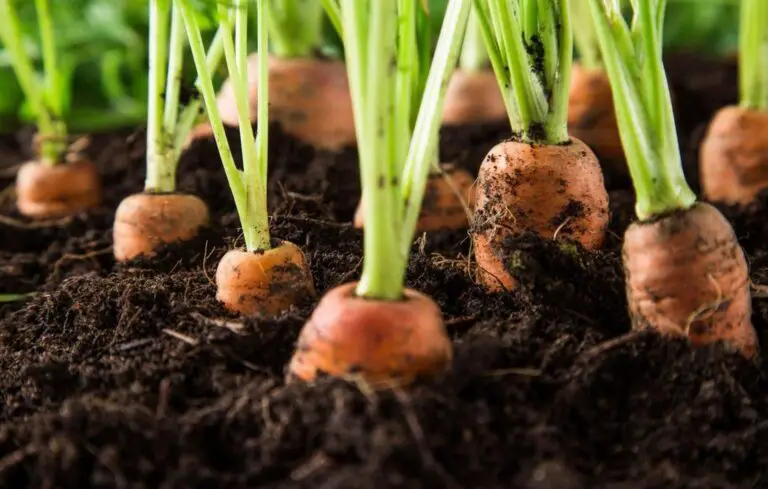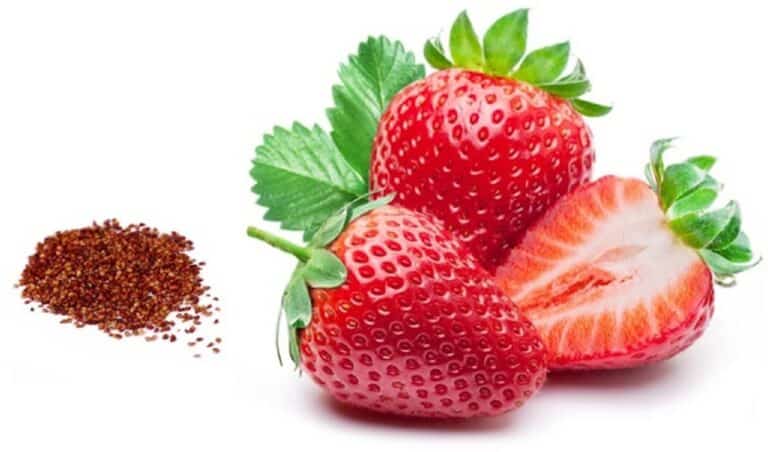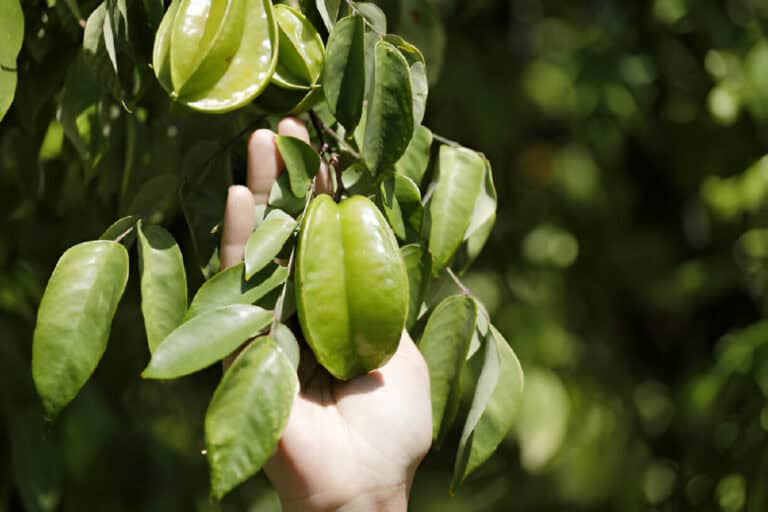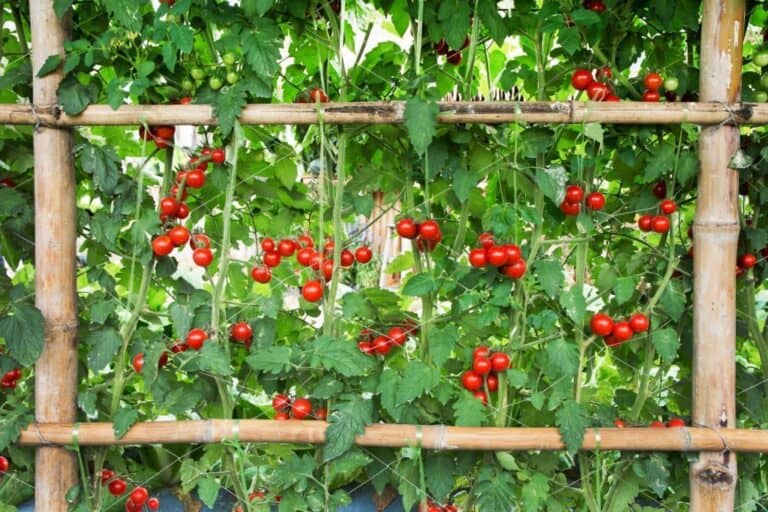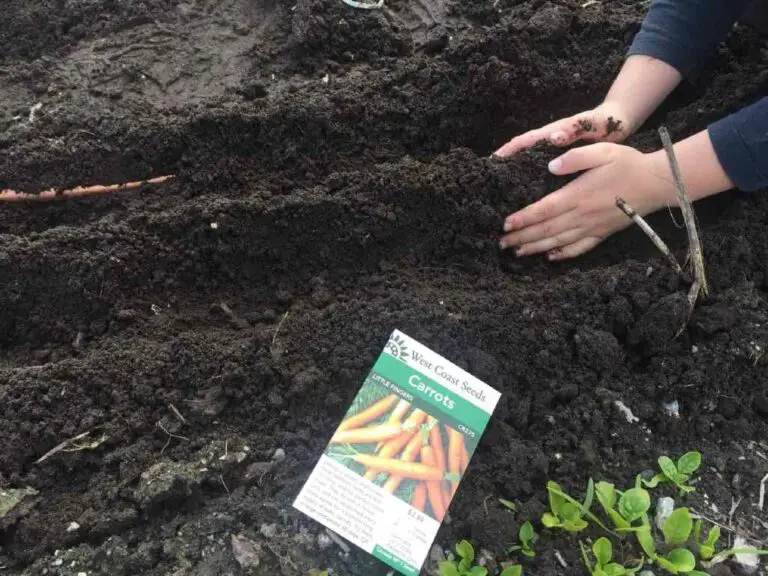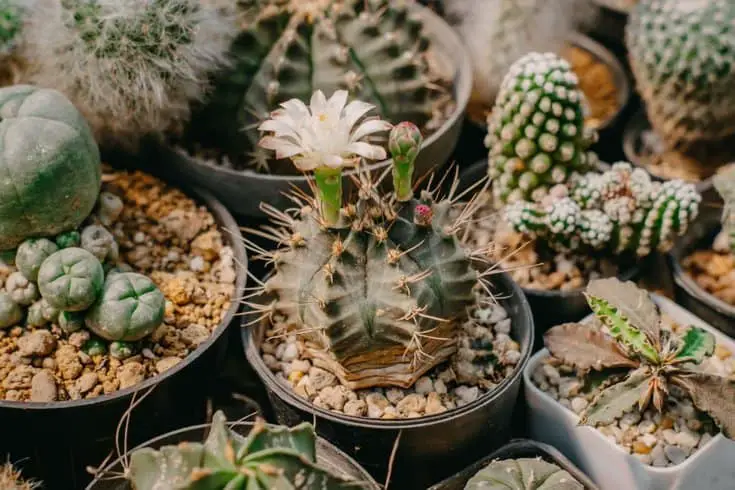Differences Between Bush Beans and Pole Beans (Which One for Your Garden?)
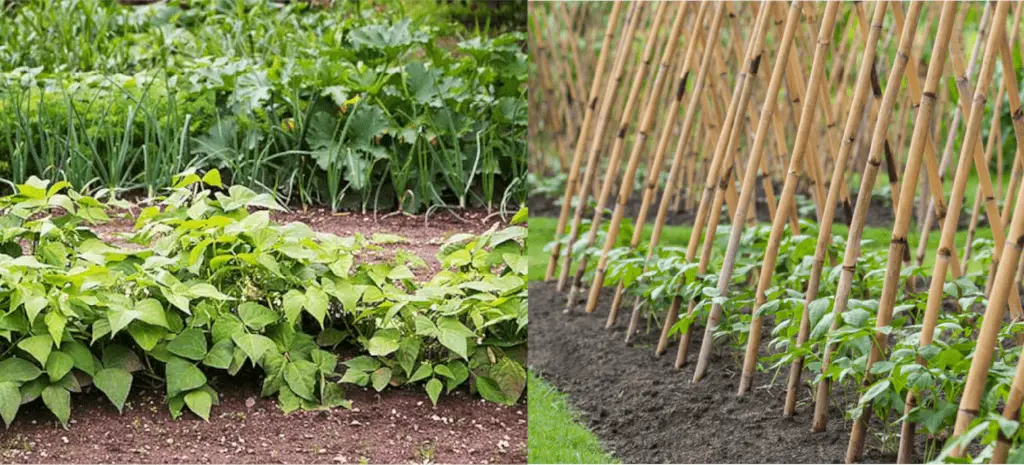
Are you struggling to decide between planting bush beans or pole beans in your garden? The decision can be tough, with both types offering unique advantages and disadvantages.
This article will explain the differences between bush beans and pole beans to help you determine which one is best for your garden.
Here, we will compare the two types of beans, and by the end of this article, you will know which bean is best for your garden. Let’s get started!
Green Beans and Their Growth Habits
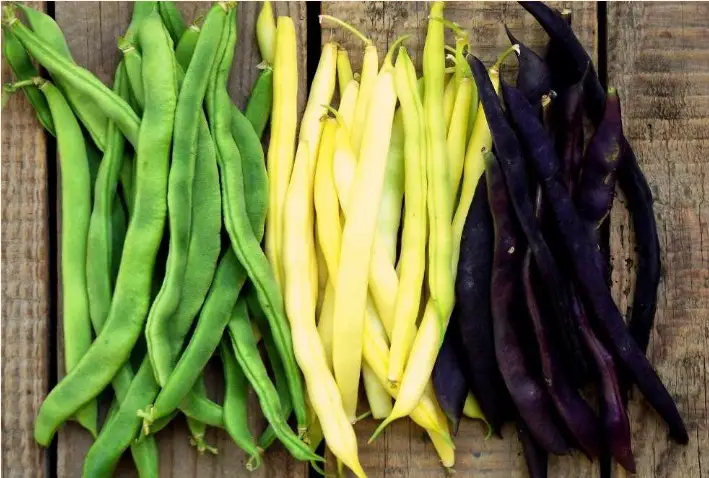
Green beans have two major types defined by their growth habits: bush beans and pole beans. In both categories, green beans come in a wide variety of hues and shapes.
Bush beans are a type of green bean that grows in a tight cluster and doesn’t need support to grow. Pole beans, on the other hand, are a naturally climbing variety of green beans that require support to grow.
It’s important to note that both bush beans and pole beans are the same species, Phaseolus vulgaris. In some cases, they can even be the same variety with different forms.
They are developed from the same genetic makeup, but through selective breeding and cultivation, they have been trained to grow in different ways. This means that, although bush beans and pole beans have different growth habits, they share the same genetic makeup and nutritional values.
Bush Beans: Definition, Pros, and Cons
Bush beans are short plants that do not need support and do not climb. They are typically grown as annuals and can reach a mature height of 2–3 feet. They are known for their early maturity, meaning that they tend to produce beans earlier in the growing season than pole beans.
This makes them a popular choice for gardeners who want to harvest their beans as soon as possible.
One of the main pros of bush beans is that they are space-saving. They take up less space in the garden than pole beans, which makes them a great option for small gardens or for planting in containers. They also tend to have a more compact growth habit than pole beans, which makes them easier to manage and less likely to take over the garden.
Another advantage of bush beans is that they are easy to harvest. The beans are easy to pick because they are shorter and bushier than pole beans. This makes it easy to pick the beans by hand without having to climb a ladder or use a tool to reach them.
There are also some cons to growing bush beans. One of the main cons is that they tend to have a limited yield. They produce fewer beans than pole beans, which means that gardeners will need to plant more bush beans to get the same amount of beans as they would from pole beans. Additionally, bush beans tend to have a shorter lifespan than pole beans, which means that they will need to be replanted each year.
Pole Beans: Definition, Pros, and Cons
Pole beans are climbing plants that need support and can grow up to 20 feet tall. They are typically grown as annuals and are known for their high yield and long lifespan. Pole beans come in a variety of colors, sizes, and shapes, which means that there is a wide range of options for gardeners to choose from.
One of the main pros of pole beans is that they have a high yield. They produce more beans than bush beans, which means that gardeners will need to plant fewer pole beans to get the same amount of beans as they would from bush beans.
Pole beans tend to have a longer lifespan than bush beans, which means that they will not need to be replanted as often. This can save gardeners time and money in the long run.
Another pro of pole beans is that they come in a variety of colors, sizes, and shapes. This means that gardeners can choose pole beans that fit their personal preferences and specific gardening goals. Some pole beans are known for their flavorful beans, while others are known for their attractive flowers or foliage.
There are also some cons to growing pole beans. One of the main cons is that they need support to grow. Gardeners will need to provide poles or trellises for the beans to climb on, some green beans grow on trees. This is, offcours, can be time-consuming and may not be feasible for all gardeners.
Pole beans tend to mature later in the season than bush beans, which means that gardeners will have to wait longer to harvest their green beans.
Lastly, harvesting can be difficult because they are high up on the support. Gardeners will need to use a ladder or other tool to reach the beans, which can be dangerous and time-consuming.
Differences Between Bush Beans and Pole Beans

Bush green beans grow to about two feet tall and produce beans in a short window of 3 weeks or so. They do not require support or a trellis. Bush green beans are the type most commonly grown by commercial farmers because of their concentrated production time, ease of harvesting, and difficulty in setting up trellises for pole beans.
Pole beans grow up to 20 feet long and require support or a trellis to climb. They produce over a longer period of time, around 6–8 weeks. Bush beans will start to produce a week or two before pole beans.
Bush beans are a good choice for a gardener wanting to can or freeze beans because of their concentrated harvest time. They will also give beans a week or two earlier in the season.
INFO![]()
Pole beans are usually the gardener’s choice because they produce for longer and yield more beans per square foot used. Also, there are more varieties of pole beans to choose from.
Similarities Between Bush Beans and Pole Beans
Despite their differences, there are also many similarities between the two types of beans.
Both bush beans and pole beans are members of the species Phaseolus vulgaris, which means that they have the same genetic makeup. This means that they need the same things to grow, such as soil that drains well and regular watering. They are also both good sources of protein, fiber, and many vitamins and minerals.
Both types of beans also have similar planting and harvesting methods. They can both be planted directly into the ground after the last frost, and they both require consistent moisture to grow.
They also need to be planted in a location that gets at least 6 hours of direct sun per day. Both types of beans are also ready to be harvested when the pods are plump and the beans inside are fully formed but still tender.
They both fix nitrogen. Regardless of how they grow, all legumes are nitrogen fixers, which means they draw nitrogen from the air and add it to the soil.
Another similarity is that both bush and pole beans are versatile in the kitchen; they can be eaten fresh, canned, frozen, or dried. They can also be used in different types of dishes, from stir-fries to salads, soups, and stews.
Which Is the Best Option for Your Garden?
When it comes to deciding which type of bean to grow in your garden, it can be difficult to choose between bush beans and pole beans. The benefits and drawbacks of each type are particular to themselves.
When considering which type of bean to plant in your garden, it’s important to consider your available space, the maturity date, and yield.
Bush beans are known for their early maturity and compact growth habit. They are a great option for gardeners who want to harvest their beans as soon as possible or for those who have limited space in their garden.
Bush beans are also easy to harvest, as the beans are easily accessible on the short and bushier plants. However, bush beans tend to have a limited yield and a shorter lifespan than pole beans.
Pole beans, on the other hand, are known for their high yield and long lifespan. They are a great option for gardeners who want to harvest a large number of beans or for those who want to grow a bean that will last more than one growing season.
Pole beans come in a variety of colors, sizes, and shapes, which means that there is a wide range of options for gardeners to choose from. However, pole beans need support to grow and tend to mature later in the season than bush beans. Harvesting pole beans can be difficult because they are high up on the support.
In the end, the best choice for your garden will depend on what you want to grow and how you like to garden. If you’re looking to harvest your beans as soon as possible and have limited space, bush beans might be the best option.
If you’re looking to harvest a large number of beans or grow a bean that will last more than one growing season, pole beans might be the best option. Before making a choice, you should also think about the growing conditions in your garden, such as how much sun and space you have.
Best Bush Beans Varieties to Plant in Your Garden
- Blue Lake 274 – This is a heavy yielding bush bean with a short producing period that makes it ideal for canning and freezing.
- Romano Bush – This is a heavy yielding Italian green bean variety with the characteristic broad flat pods.
- Bush Kentucky Wonder – A popular variety that is known to be a good producer and adaptable to most regions.
- Beananza – This is a french filet variety green bean developed by Burpee. It’s a very small plant only growing to about 15 inches in height.
- Purple Queen – This bush bean has purple pods and is an early producer with good disease and cold weather resistantce.
- Big Kahuna – This is another variety developed by Burpee and this will produce the largest beans of any bush type plant with beans around 12 inches long.
- Cherokee Wax – This is a yellow pod variety that produces black beans. It is an all-purpose variety that is good fresh or for freezing and canning.
Best Pole Beans Varieties to Plant in Your Garden
- Rattlesnake Pole – This heirloom variety produces green pea pods with purple streaks that make for a beautiful pod. The pods will grow 8-12 inches long. It does well with heat and sandy soils but will grow in many regions.
- Yardlong Bean – This variety produces a bean pod that is anywhere from 1.5-3 feet long! This plant attracts lots of pollinators that are a benefit to any garden.
- Kentucky Wonder Pole – A popular heirloom variety that is a heavy yielder and adaptable to many areas of the country. Produces a good all-purpose bean with a dark green pod good for fresh eating, freezing and canning, or to let mature and harvest for shell beans.
- Emerite – Heavy yielding filet style bean that comes from one of the oldest French breeders.
- Fortex – A popular long round style green bean that produces 6-11″ tender green pods.
- Purple King – A purple podded variety that produces beautiful uniform 5-6″ purple snap beans.
- Navarro – An Italian bean producing plant with healthy fleshy pods.
- Rocdor – A good producing wax bean with a yellow pod.
- Cherokee Trail of Tears – Produces six inch long purple pods with dark black seeds.
- Grandma Nellie’s Yellow Mushroom – Wax beans with yellow pods that grow to around 6″ long and get their name from having a similar taste to mushrooms.
- Louisiana Purple Pod – A pretty plant with purple green vines and pink and purple flowers. It produces 6 inch purple pods that turn green when cooked.
Can Bush Beans Turn Into Pole Beans?
The short answer is no, bush beans cannot turn into pole beans, but there are some nuances to this question that are worth exploring.
Bush beans were developed from pole beans, which means that they have the same genetic makeup as pole beans. The main difference between the two is that bush beans have been selectively bred to have a more compact growth habit and to produce beans earlier in the growing season. Because of this, bush beans tend to be shorter and bushier than pole beans and are more suitable for small gardens or for planting in containers.
But bush beans can sometimes take on some of the traits of their pole bean ancestors by stretching out and getting lanky before settling into a more compact bush habit. This can happen if the bush beans are grown in ideal conditions, such as rich soil with plenty of moisture, or if they are grown in a location that gets more sun than they are used to.
In these cases, your bush bean may appear to be a pole bean, as it has grown taller and more vine-like than a typical bush bean. However, it is important to note that this is not a permanent change and that the bush bean will eventually settle into a more compact growth habit. Additionally, even if your bush bean appears to be a pole bean, it will not produce as many beans as a true pole bean, and it will not continue to grow indefinitely like a pole bean.
Can Bush Beans and Pole Beans Be Planted Together?
The answer is yes; it is possible to plant pole beans and bush beans together in the same garden. Both bush beans and pole beans have similar growing requirements and can easily be grown side by side if the requirements of each are met.
When planting pole beans and bush beans together, it’s important to consider the specific growing conditions for each type of bean. Pole beans need support to grow and thrive in full sun, while bush beans do not need support and prefer partial shade. It’s important to provide each type of bean with the conditions it needs to grow and produce well. If you’re planting them in a limited space, you can consider using a trellis or other support for the pole beans and placing the bush beans in an area that gets less sun.
When planting pole beans and bush beans together, it’s also important to be aware of their different maturity dates. Pole beans tend to mature later in the season than bush beans, so it’s best to plant them in separate areas of the garden or in separate rows, so they can be harvested at the appropriate time.
It’s also worth noting that monocultures, or large areas of the same plant, are sometimes not desirable. Planting a variety of different types of beans, including both pole and bush beans, can help to increase the biodiversity of your garden and attract beneficial insects and pollinators.

